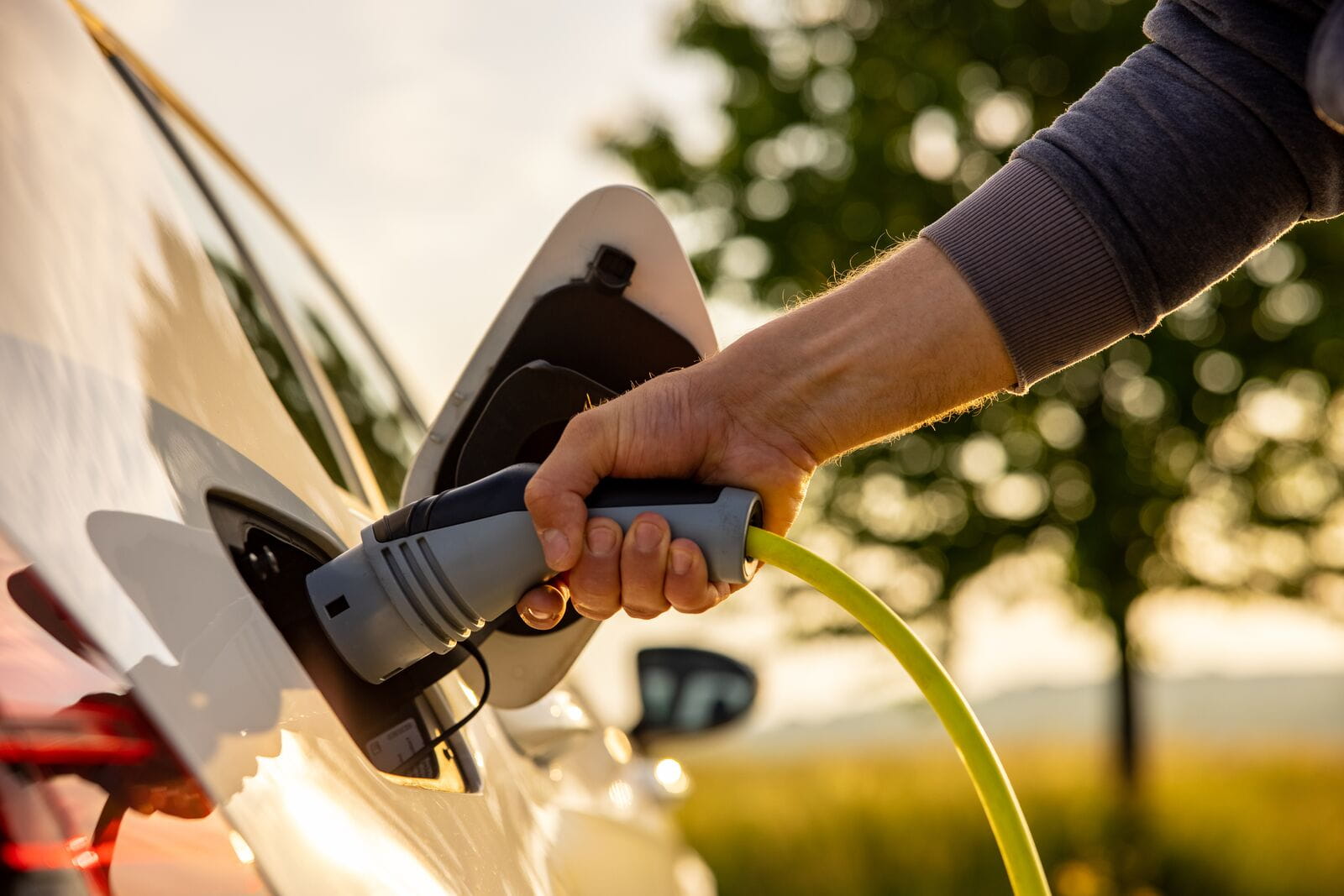
Our journey to 500,000 electric vehicles
As of the 10th of November we, at ALD Automotive I LeasePlan, are thrilled to announce that we have achieved the remarkable milestone of 500,000 electric vehicles* in our fleet. This constitutes 14% of our entire fleet, establishing ALD Automotive I LeasePlan as the proud owner of the world's largest electric vehicle fleet.
However, it's crucial to understand that the transformation of our fleet didn't occur overnight. Achieving this significant goal has been the result of over a decade of dedicated work by both ALD Automotive and LeasePlan.
Key milestones on the journey
2017
- LeasePlan issues 500M green bond to finance EV fleet
- LeasePlan ramps up internal employee fleet electrification
2018
- LeasePlan Consultancy launches EV fleet transition support
- ALD issues 500M green bond to finance EV fleet
- Launch of ALD internal EV Programme
2019
- Launch of ALD EV consultancy support at international level and in our major markets
- ALD signs International Partnership Agreement with Chargepoint
- European Investment Bank (EIB) grants ALD 250M credit to invest in accelerating electrification
2020
- Acceleration of EV uptake, share of EVs in passenger car deliveries exceed 10% (ALD)
- ALD successively chosen by Tesla and Polestar as preferred partner in Europe for their full-service leasing offer.
- ALD Electric end to end offer available in 5 markets
2021
- EVs over 25% of passenger car deliveries at ALD
- LeasePlan’s employee fleet in Norway and the Netherlands fully electric
2022
- ALD electric bundled proposition available in 34 markets
2023
- ALD Automotive and LeasePlan merged to create a company that stands at the forefront of sustainable mobility, possessing the world's largest electric vehicle fleet.
What we predicted a decade ago
ALD Automotive and LeasePlan played pivotal roles in offering expert advice and reports to our clients and the industry regarding electric vehicles over the past decade. Let's revisit two of the oldest white papers (that we could find) from both companies.
eVehicles: The future of fleet? Published by LeasePlan in 2010
This early white paper delved into the concept of electric vehicles or eVehicles, as they were more commonly known a decade ago. It explored what EVs were, the various types of electrified vehicles, the essential factors for EV success, and provided guidance to fleet managers on assessing EVs for their fleets. Since EVs, particularly battery electric vehicles, were relatively scarce over a decade ago, LeasePlan also made some predictions about their future. Let's examine how accurate these predictions turned out to be.
Prediction: By 2020, 10% of new car sales will be electric Reality: Globally, this prediction fell slightly short, with EVs constituting only 4% of new car sales in 2020. However, within the European Union (EU), the prediction was quite close, as 11% of new car sales were electric in the EU in 2020.
Prediction: It’s expected that the governments of France, Germany, the United Kingdom and the Netherlands will be the first to invest in EV infrastructure and subsidies. Reality: The Netherlands and the United Kingdom were indeed accurate in this regard, but the Nordic countries (Norway, Sweden, and Finland) were among the first to invest in EV subsidies and infrastructure. Germany had government incentives for EVs early but lacked charging infrastructure, and France lagged behind in charging infrastructure and incentives, although EV readiness in France was still higher than many other European countries.
Prediction: We will see EVs first in major cities Reality: This was true. Major cities were the first to introduce low emission zones, they had shorter distances to travel, and better public charging infrastructure, making them the initial hotspots for EV adoption before it spread.
Prediction: EVs will break into mainstream fleets and consumer base within 5 years (by 2015) Reality: This prediction was somewhat overly optimistic, as the European EV stock only reached 200,000 in 2015. It wasn't until around 2017 that EVs started to gain traction in mainstream markets.
Driving electric and your car scheme. Published by ALD Automotive in 2014
This white paper, issued by ALD Automotive in 2014, was one of the first in the industry to tackle the topic of incorporating electric vehicles into car policies. Much of the advice provided in this white paper remains relevant today for initiating adjustments to car policies to accommodate electric vehicles. These include:
Advice in 2014: Review the brands permitted in your car policy to ensure it includes car brands that offer EVs. Update for 2023: Reviewing the car brands allowed in your car policy remains sage advice, particularly when seeking cost savings. However, today, with most major car manufacturers offering a wide range of EVs, concerns about a lack of EV choices among original equipment manufacturers (OEMs) are no longer relevant. Now there are even more OEMs entering the market with a sole focus on EV, like Nio.
Advice in 2014: Adjust budgets to reflect the difference in Total Cost of Ownership (TCO) for EVs. Although the purchase price is higher, fuel costs can be lower. Update for 2023: TCO remains a relevant factor for setting lease budgets and it’s important to consider how the costs of EVs are different for ICE vehicles, in particular the lower energy (fuel) costs and beneficial tax arrangements and government subsidies.
Advice in 2014: TCO remains a relevant factor for setting lease budgets and it’s important to consider how the costs of EVs are different for ICE vehicles, in particular the lower energy (fuel) costs and beneficial tax arrangements and government subsidies. Update for 2023: This advice remains pertinent today. Any modern car policy should include a section on charging at home, work, and in public spaces.
Sometimes you take a chance, and it doesn’t work out
When you’re a leader in an industry and the first to adopt new technology, some things work out while others don’t. During our electrification journey, we have enjoyed numerous successes, yet we have also made decisions that did not unfold as planned. As a company, we take pride in learning from these growing pains and sharing the lessons with our clients.
Entire worldwide employee fleet electrified
In 2017 LeasePlan made a commitment to fully electrify their employee fleet by 2021. By 2021 the LeasePlan employee fleets in the Netherlands and Norway were 100% electric but in many other countries LeasePlan was present in, it was not possible to fully electrify the fleet. The main blocker for electrification was the lack public charging infrastructure and the shortage of EVs in some countries.
What we learnt: The ability to fully electrify a fleet hinges on several factors, often beyond the control of fleet managers, including the availability of charging infrastructure. LeasePlan introduced an "EV Readiness Index" to help our clients, particularly those operating internationally, assess a country's preparedness for electric vehicles. We joined the EV100 group and collaborated with them to advocate for improved infrastructure and subsidies from governments, facilitating the transition to zero-emission vehicles for individuals and companies.
Plug-in hybrids as low emission vehicles
When plug-in hybrids first emerged, it seemed like the ideal solution for achieving the perfect powertrain—part electricity for short distances and, for longer trips, the seamless transition to petrol or diesel. This promised an overall low carbon emission rating, presenting a green alternative to traditional vehicles.
What we learnt Real world emissions for, plug-in hybrids (PHEVs) are much higher than the OEM-stated emissions, which are a best-case scenario. Actual emissions often can be up to five times higher than what the Worldwide Harmonised Light Vehicle Test Procedure (WLTP) suggests. Take the 2021 Ford Kuga PHEV, for example, with a WLTP reported CO2 emissions of 32 grams per km, but Travel Card data on real world use revealed an average of 159 grams per km . The culprit? Many PHEV drivers skip charging and rely on petrol or diesel, resulting in higher emissions. To genuinely achieve PHEVs' low CO2 claims, a daily commute of under 50 km and consistent daily charging are essential.
The journey continues
This is only the start of the transition to zero emission mobility and while ALD and LeasePlan have come a long way, there is still work to be done. With company vehicles representing Europe’s largest car market (58% of new car sales in 2022 were part of corporate fleets) they are also responsible for a large amount of CO2 emissions, up to 50% of carbon emission for some organizations. If you’re interested in hearing more about how ALD Automotive I LeasePlan can help with the transition to an electric fleet, get in contact with us.
*electric vehicles are defined as battery electric vehicles, fuel cell electric vehicles and plug-in hybrid vehicles



